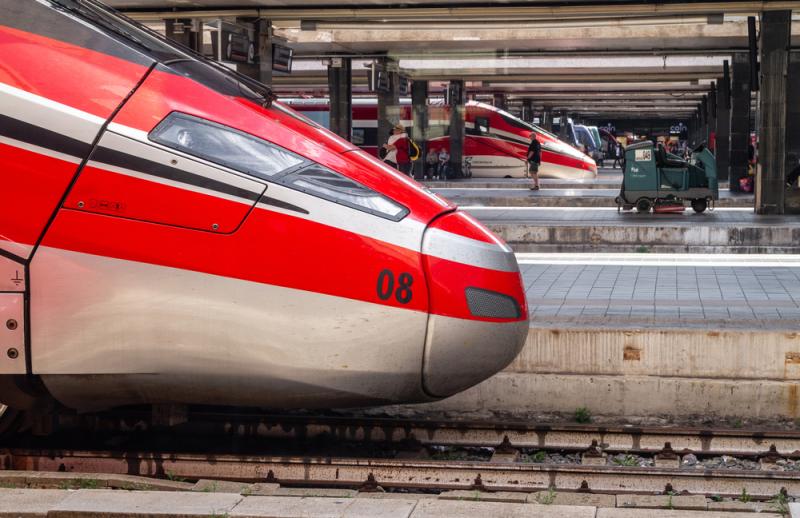Beginning August 6, archaeology and history buffs will be able to enjoy direct, high-speed Frecciarossa train service between Rome’s Termini station and the Pompeii Archeological Park, one of the most popular destinations in Italy.
The rail service took its maiden voyage on July 16, with several high-profile passengers onboard, including Prime Minister Giorgia Meloni and Culture Minister Gennaro Sangiuliano.
The Rome-Pompeii train was originally scheduled to operate only every third Sunday of the month, but due to enthusiastic demand, the train will instead run every Sunday.
Until now, travelers to the UNESCO World Heritage have had to change trains in Naples or Salerno. Depending on the type of train booked, the journey could take anywhere between two and a half and five hours. The new, quicker and direct line will get passengers there in under two hours.
The railway line to Pompeii— the ancient city once buried beneath volcanic ash after the eruption of Mount Vesuvius in 79 CE — will depart Rome’s Termini station at 8.53am, arrive at the Pompei Scavi-Villa dei Misteri station at 10.40am, and return at 6.40pm – giving day trippers plenty of time to tour the Roman ruins and return to the Eternal City in time for dinner.
Fares for a one-way ticket are currently €51 for standard class; €59 for Premium; €67 for Business and €150 for Executive Class.
A joint statement issued on July 18 by the Minister of Culture, Gennaro Sangiuliano, the Minister of Infrastructure and Transport, Matteo Salvini, and CEO of the FS Group, Luigi Ferraris read, “As previously announced on the sidelines of the inaugural trip in the presence of the Prime Minister, Giorgia Meloni, we are particularly happy to announce that the new link will operate on a weekly basis, every Sunday, starting August 6.”
Making archaeological sites fully accessible to the public is part of the Ministry of Transportation and Infrastructure’s larger €35 million (around $39 million) plan aimed at strengthening the railway network in the southern part of the Italian peninsula.
“This will enable us to [...] provide additional opportunities to reach one of the world's most famous sites from the capital by Italy's flagship high-speed train,” the statement continued.

















